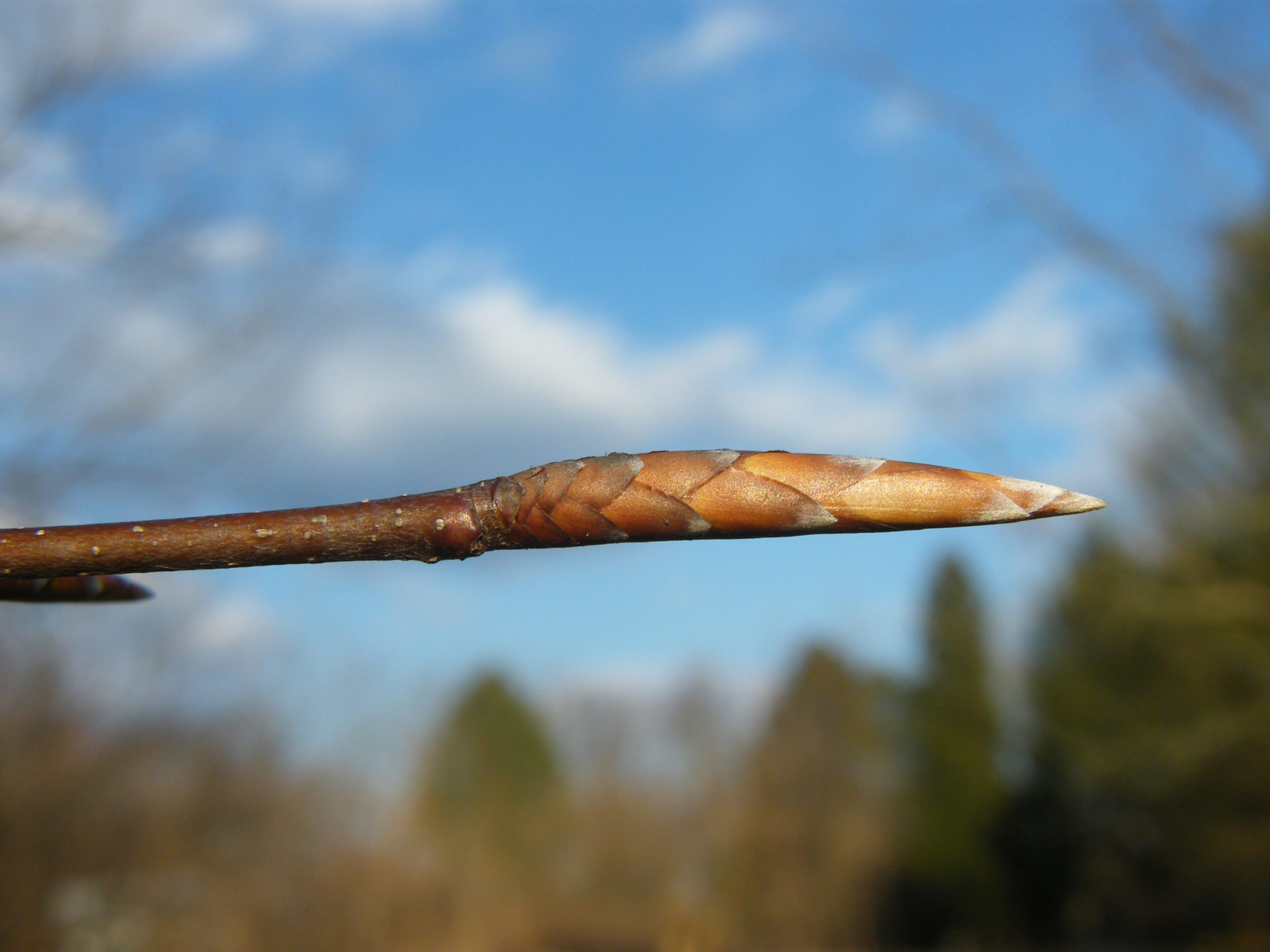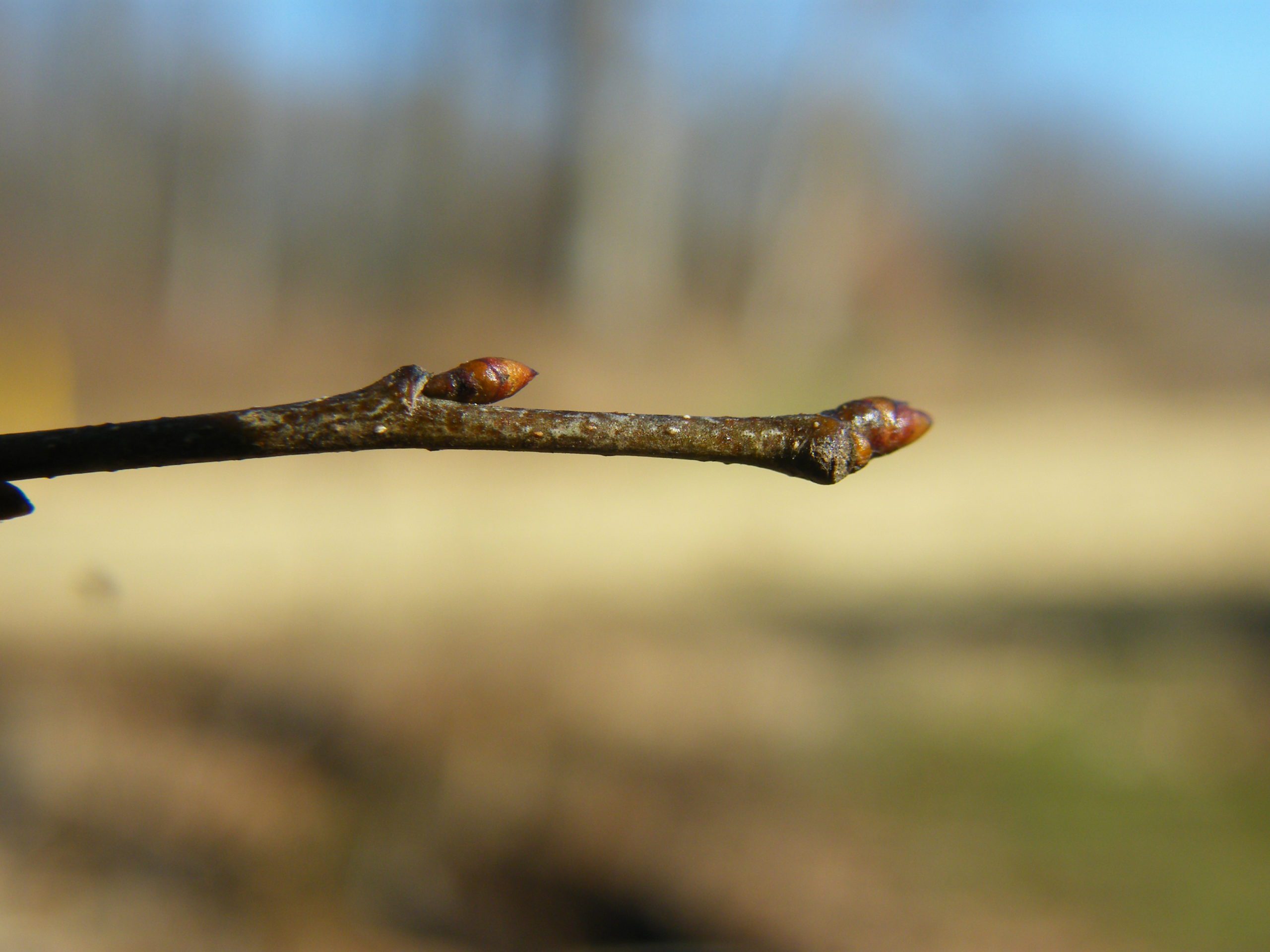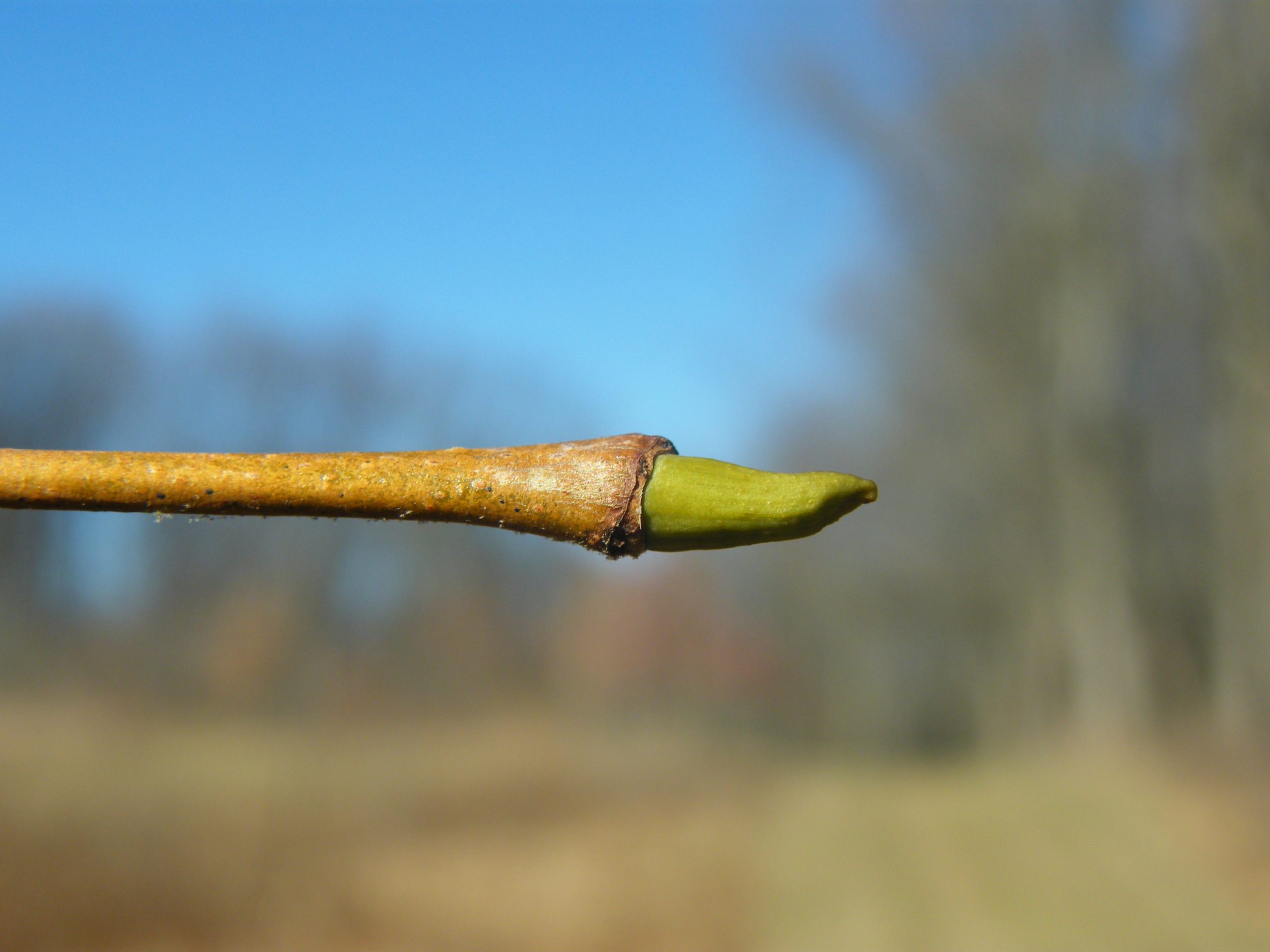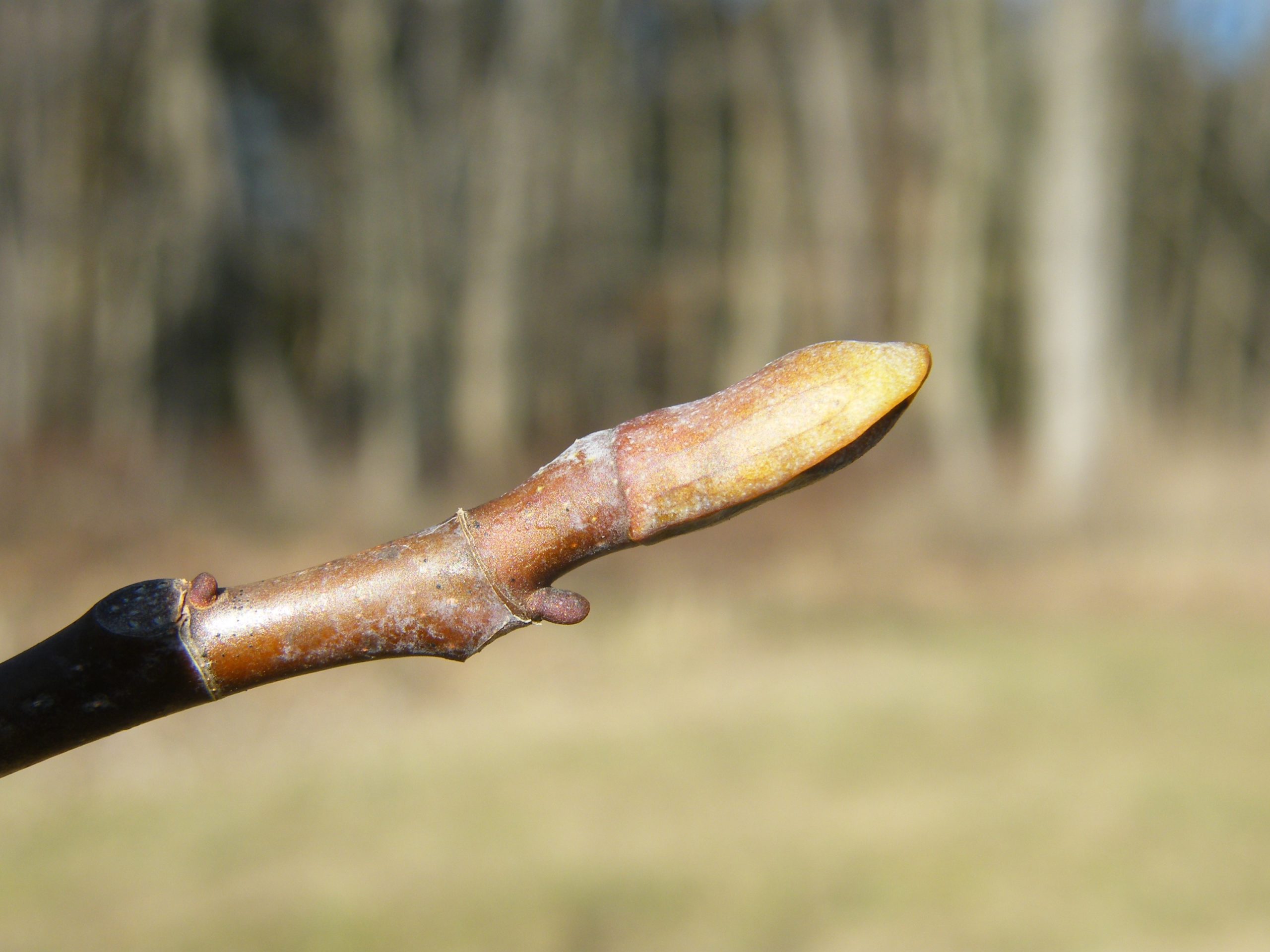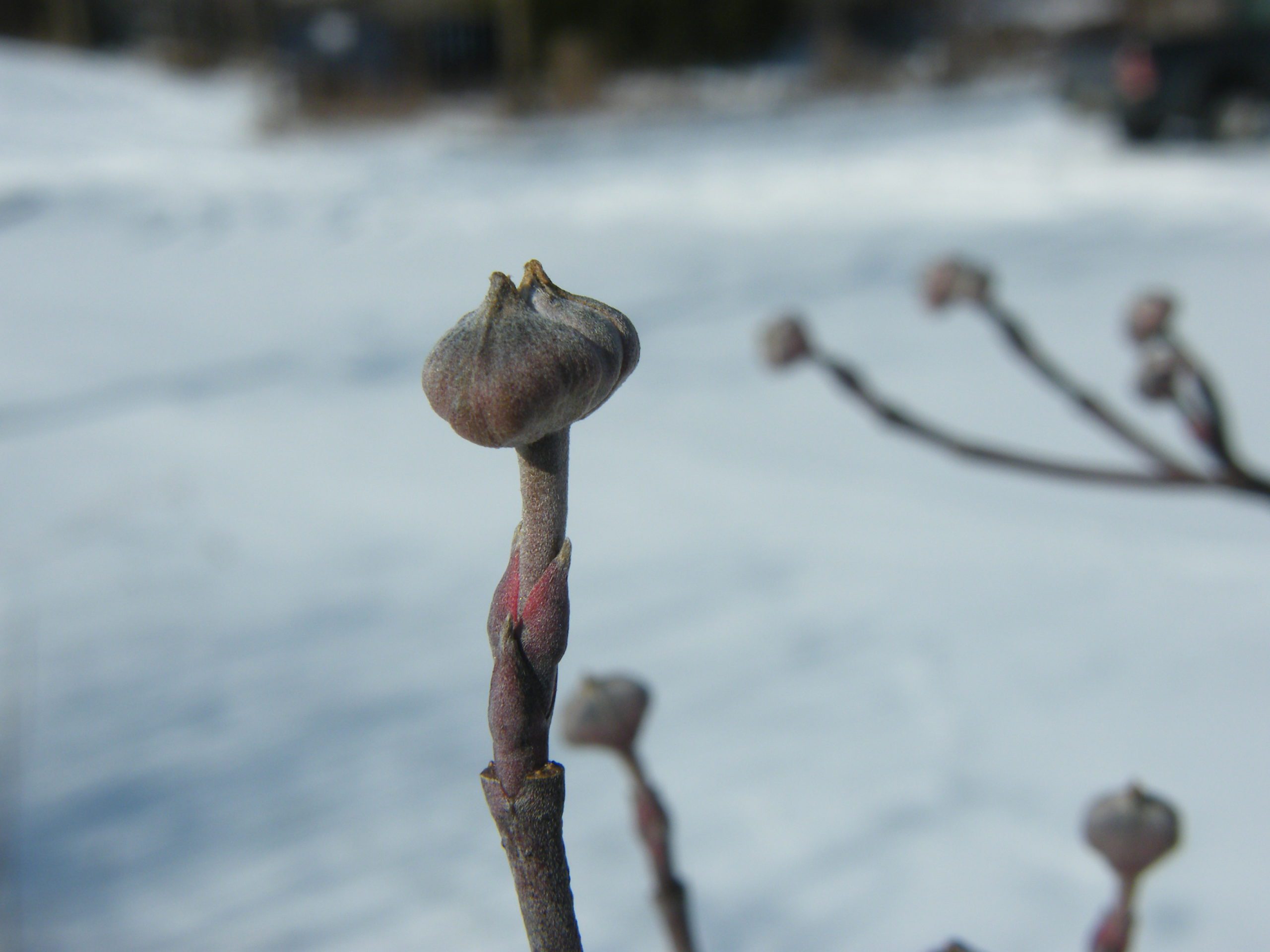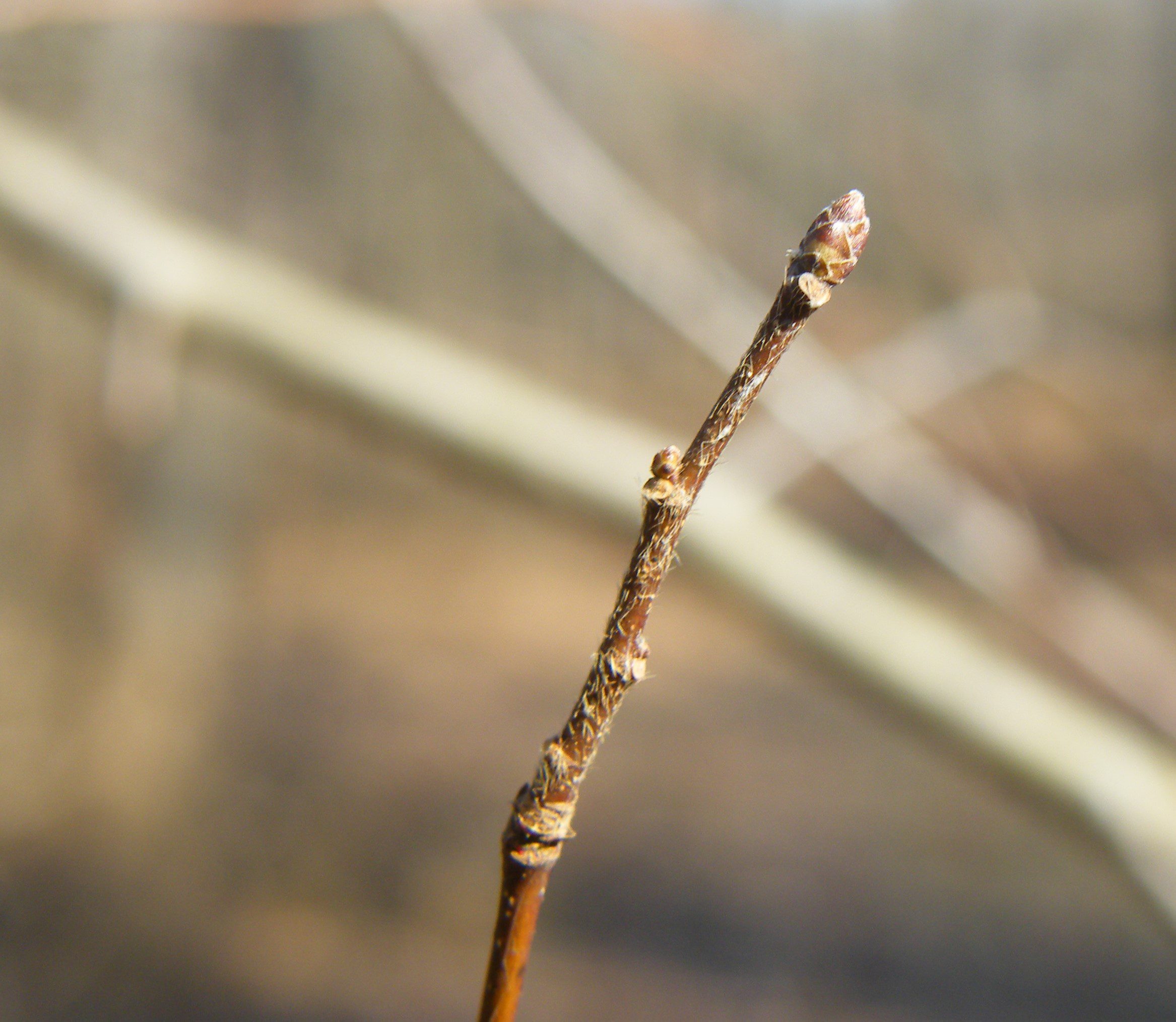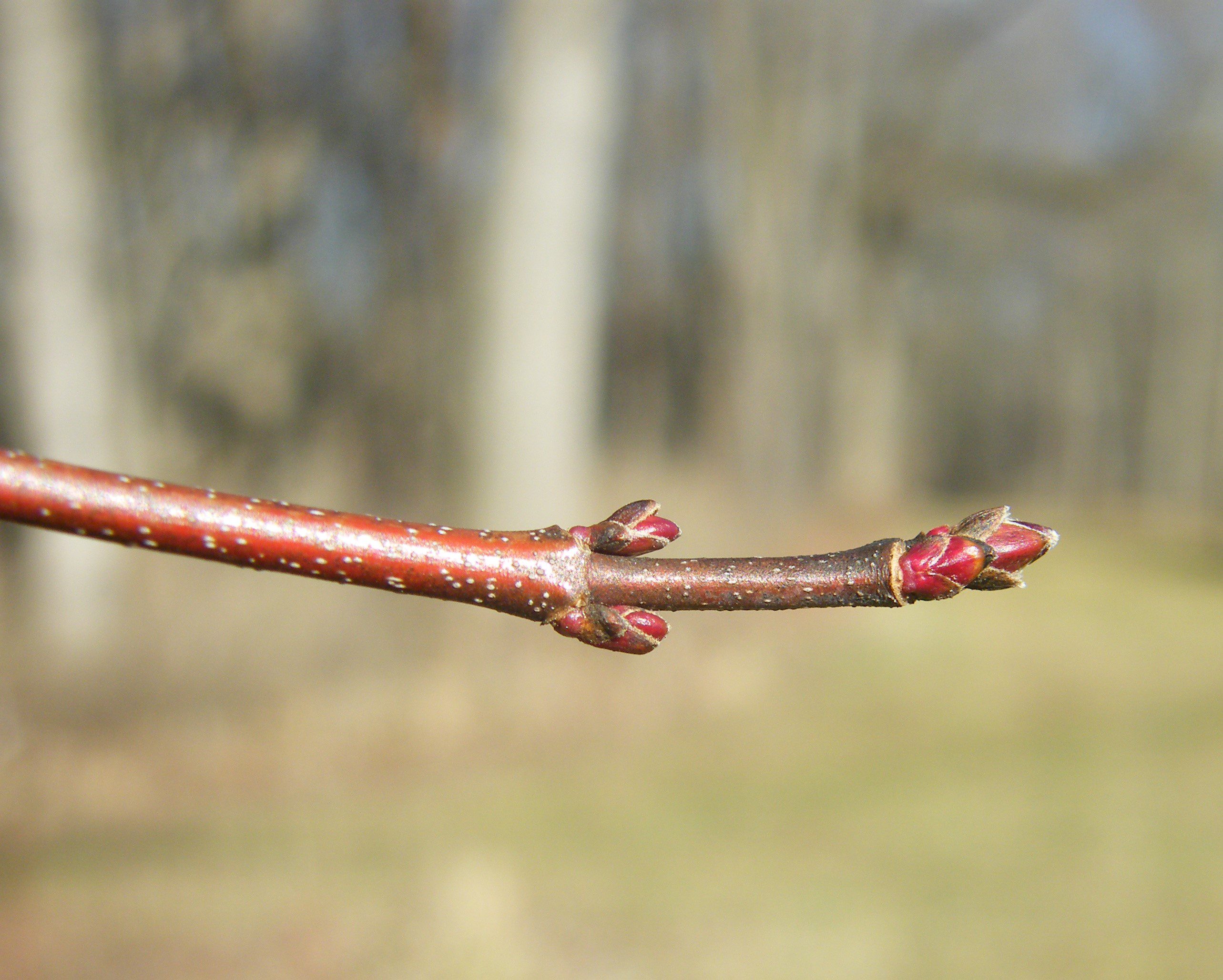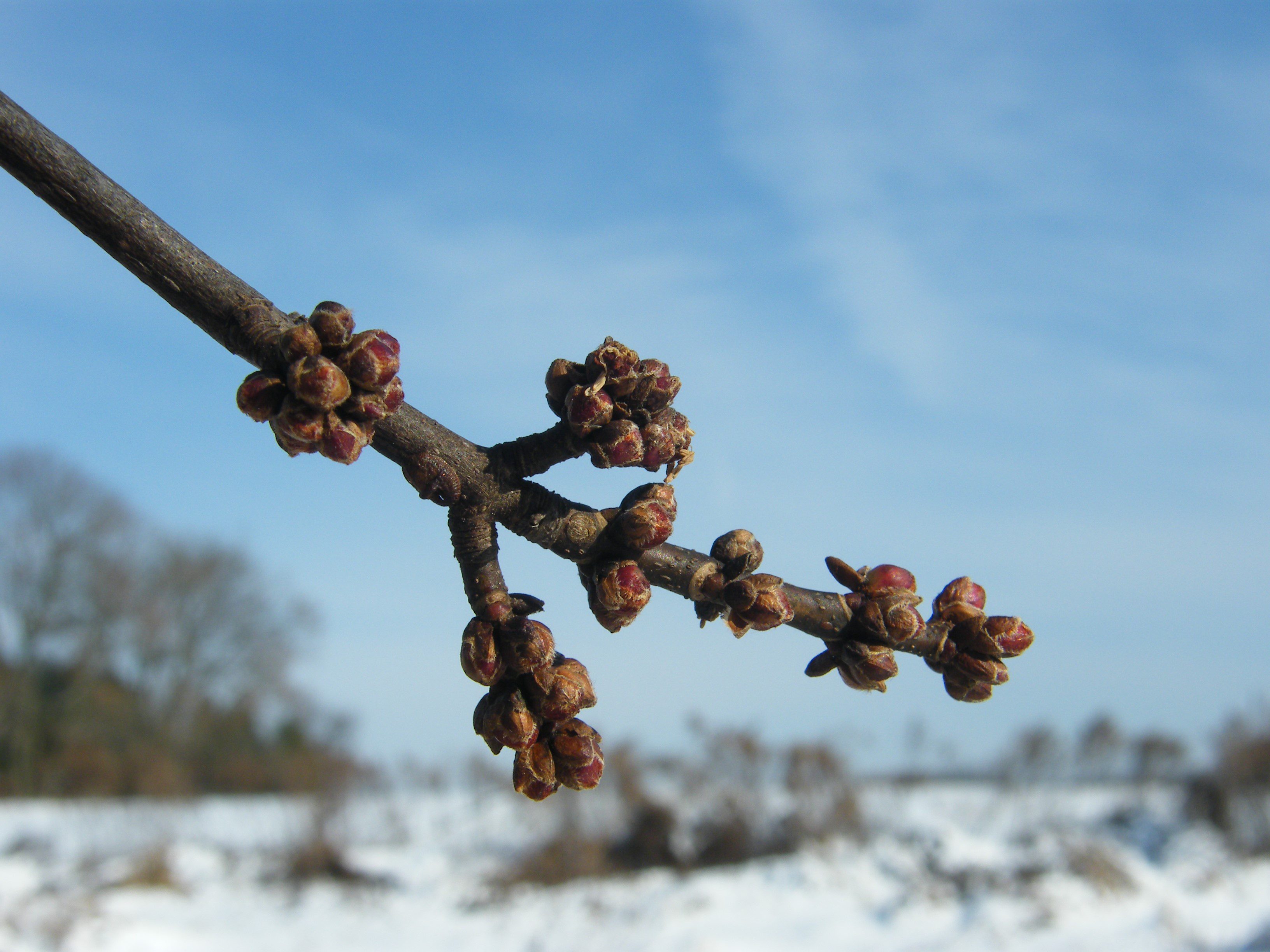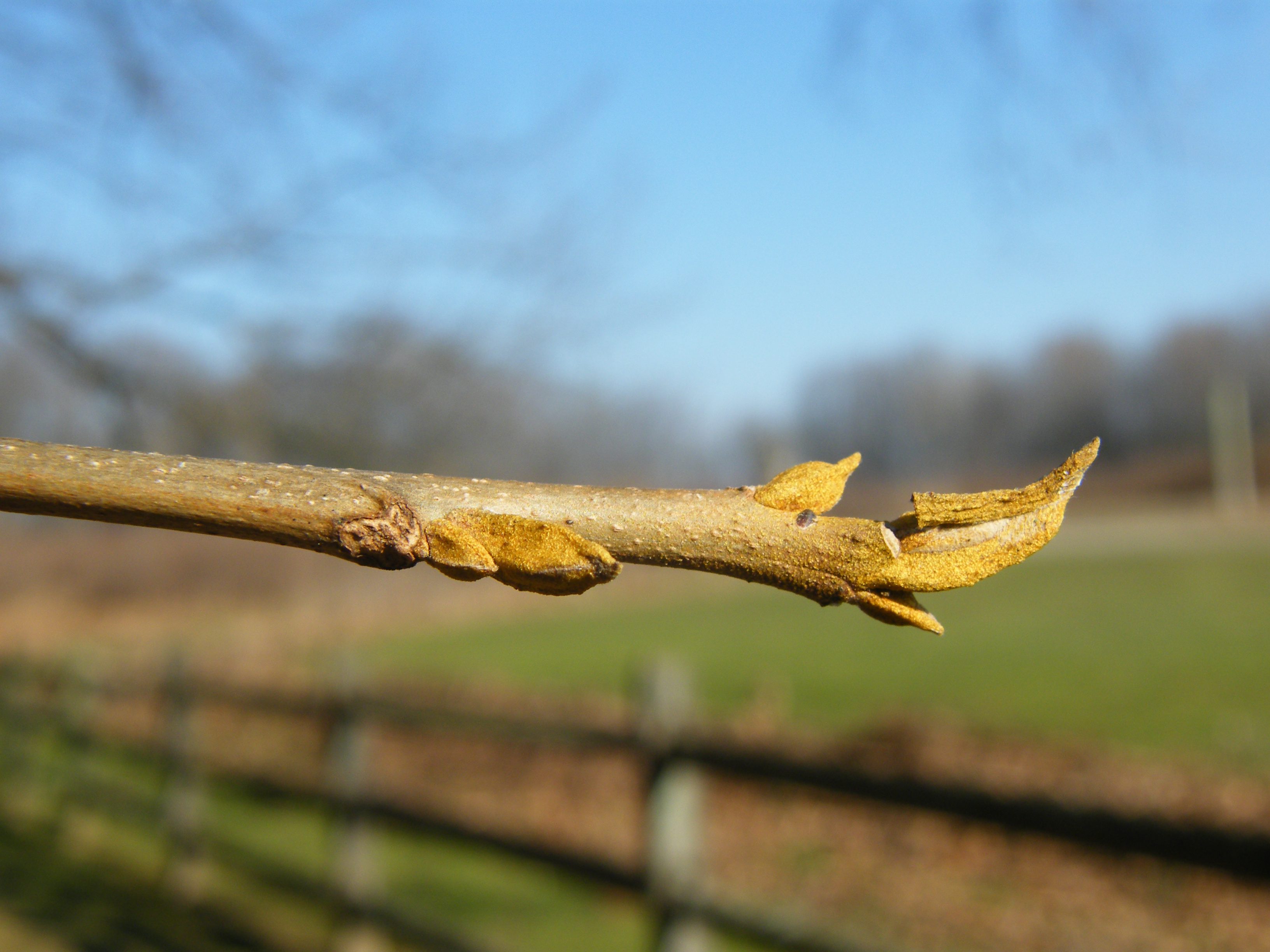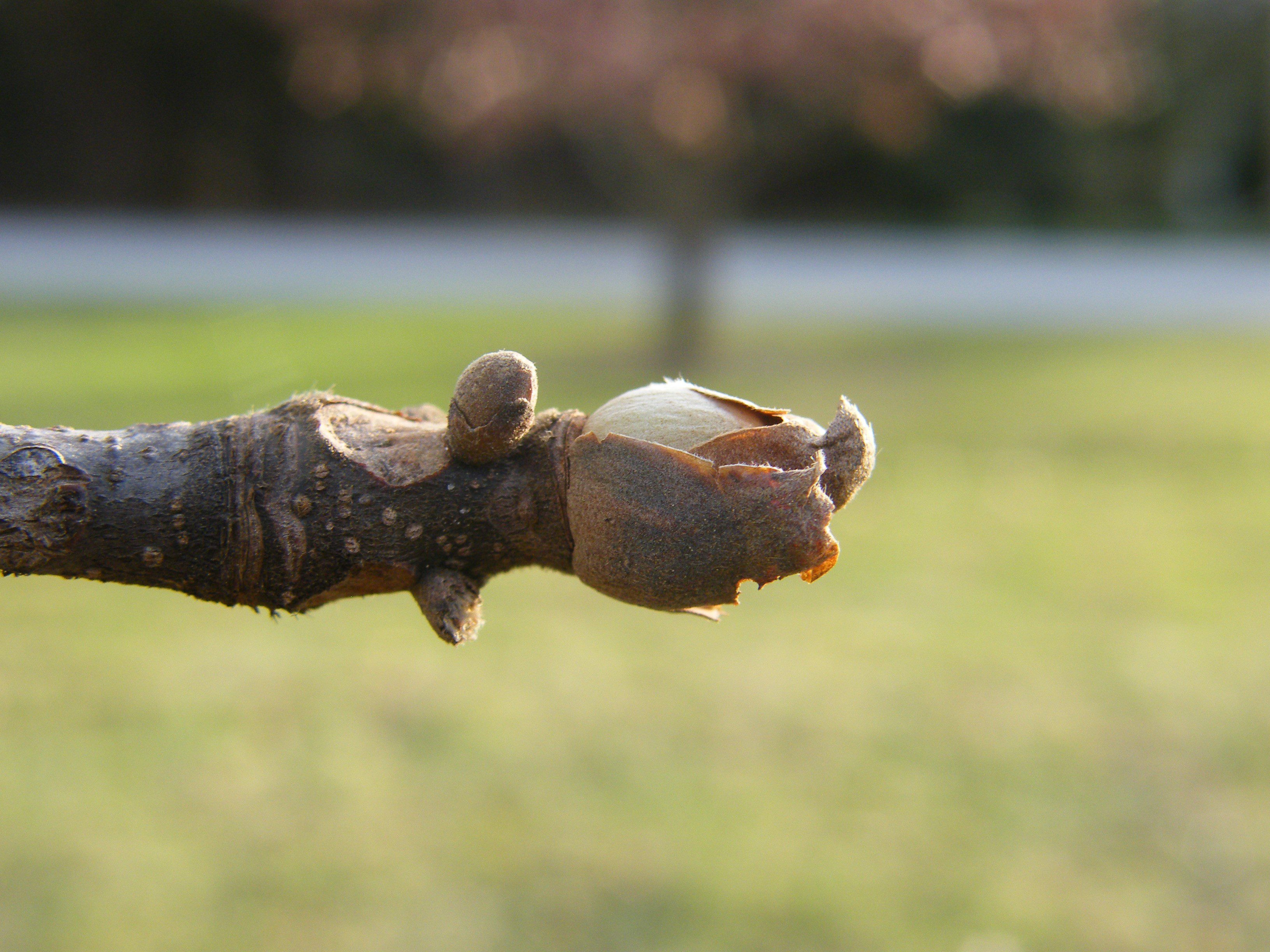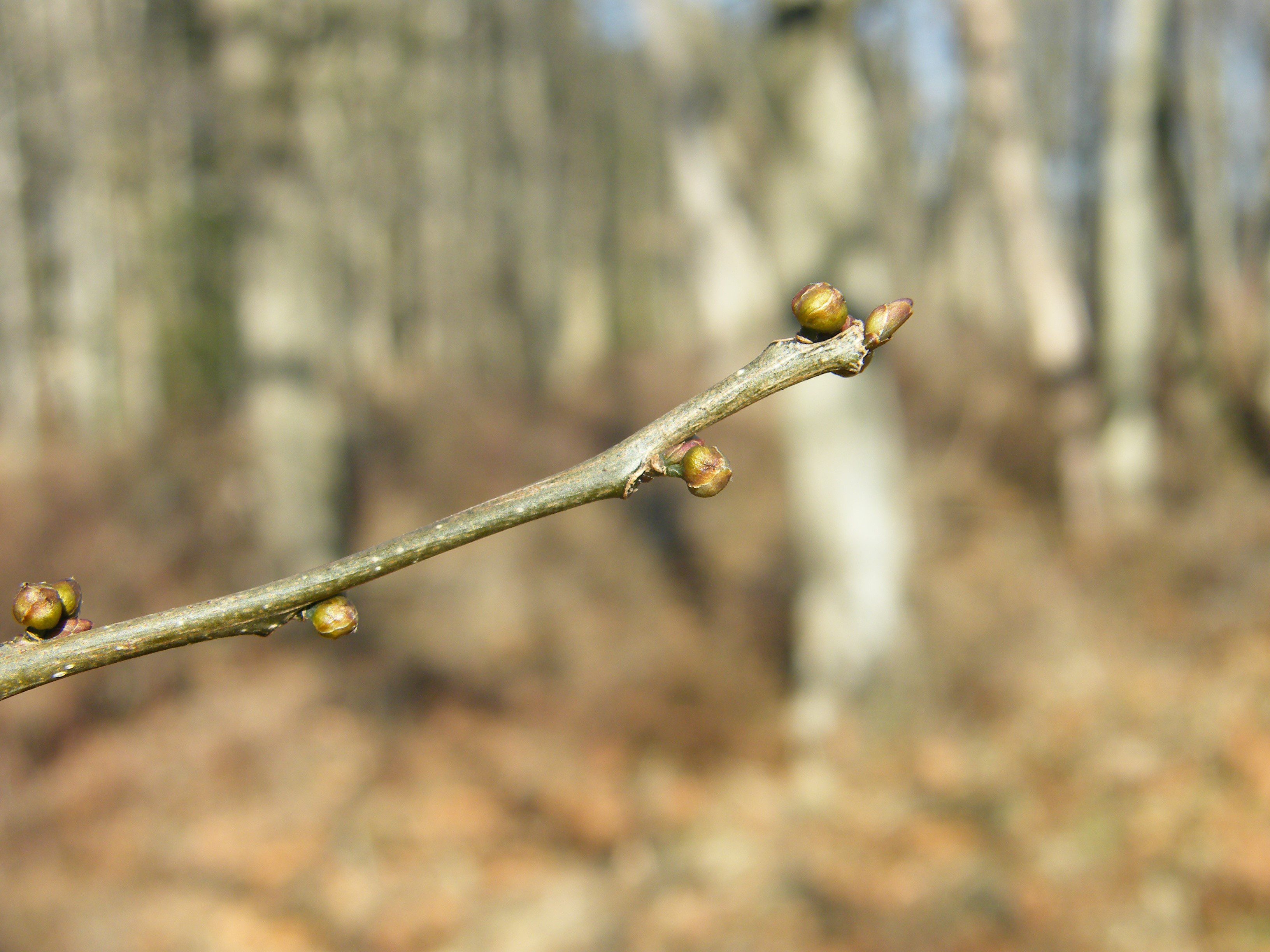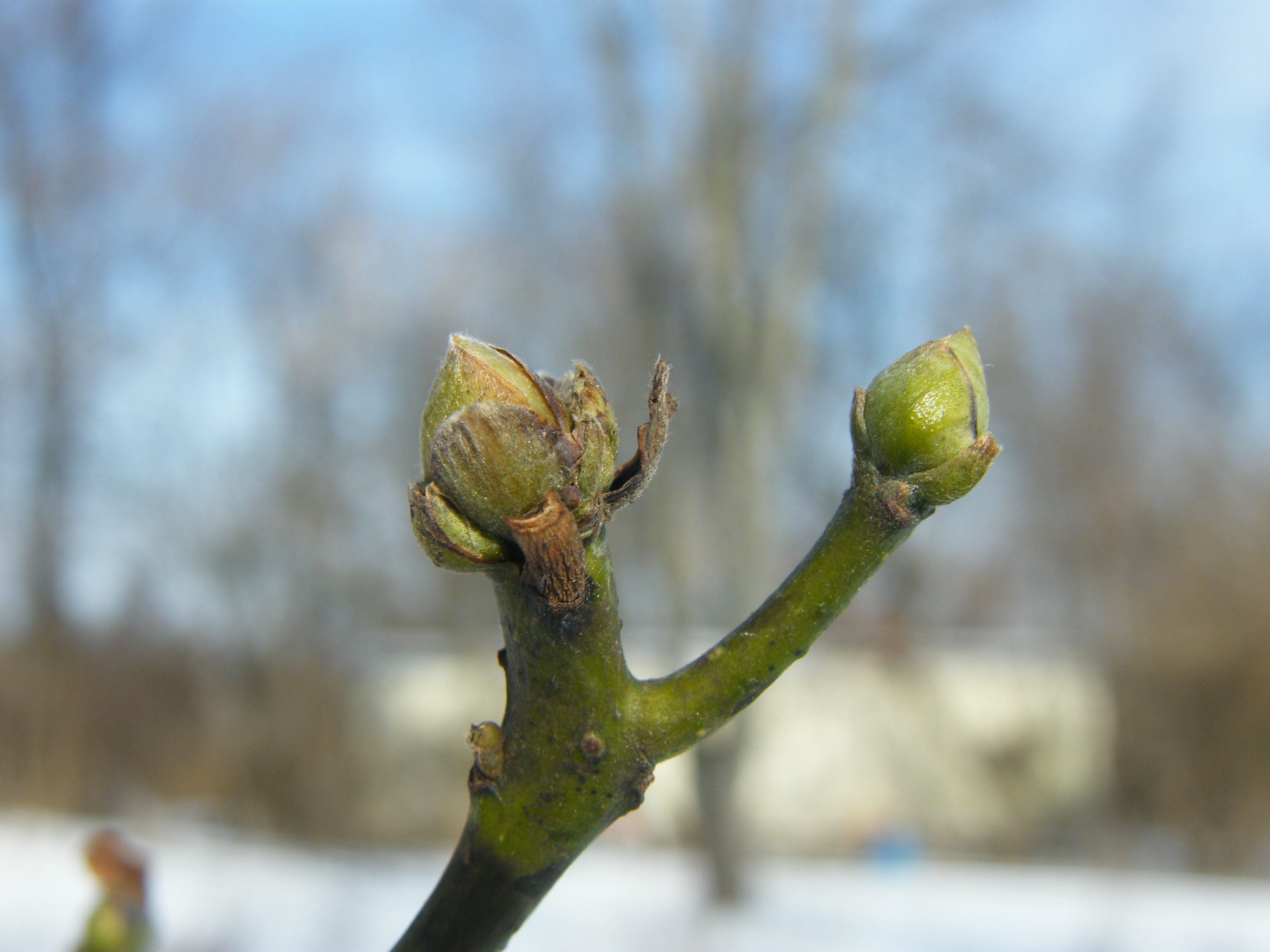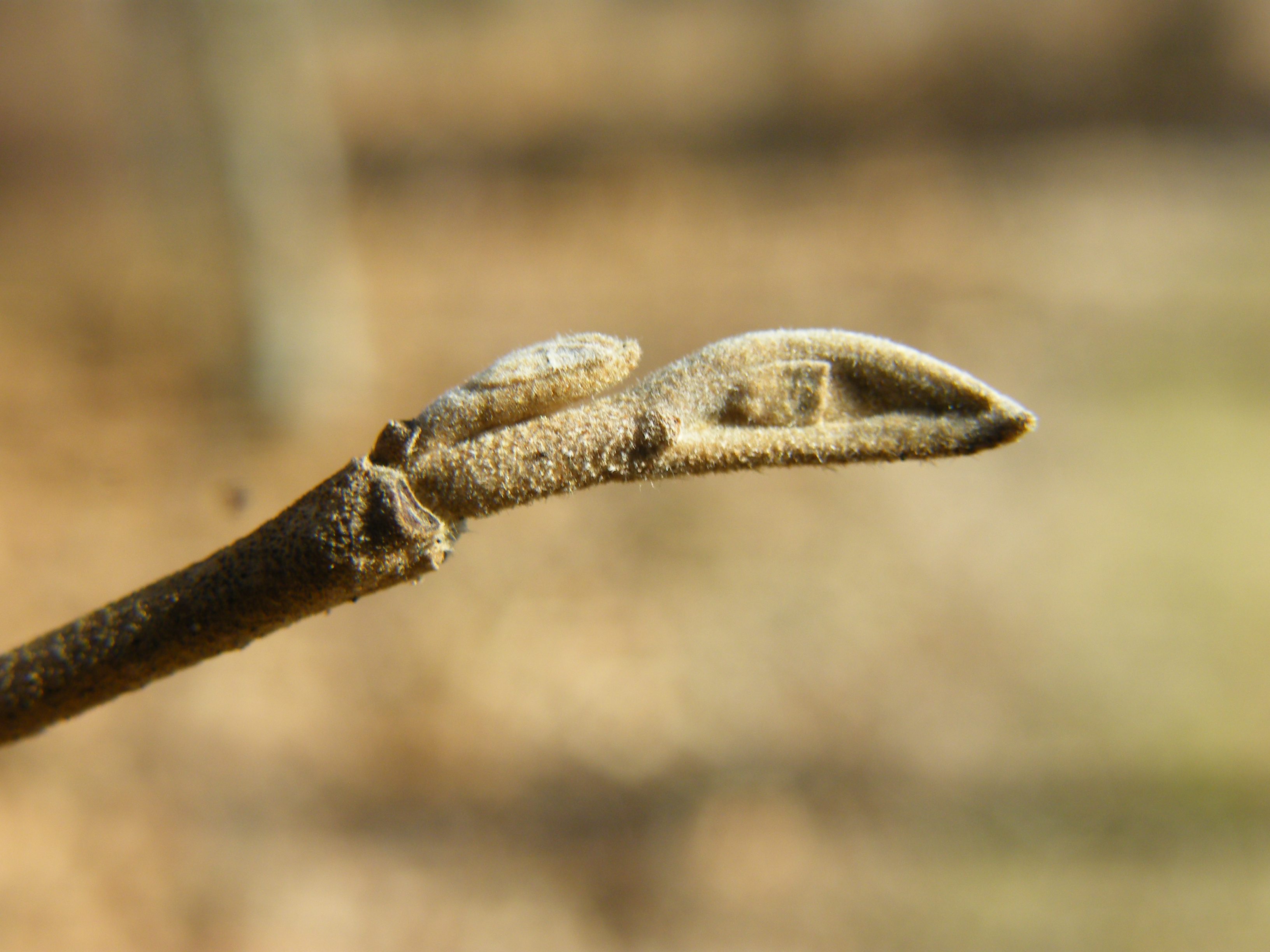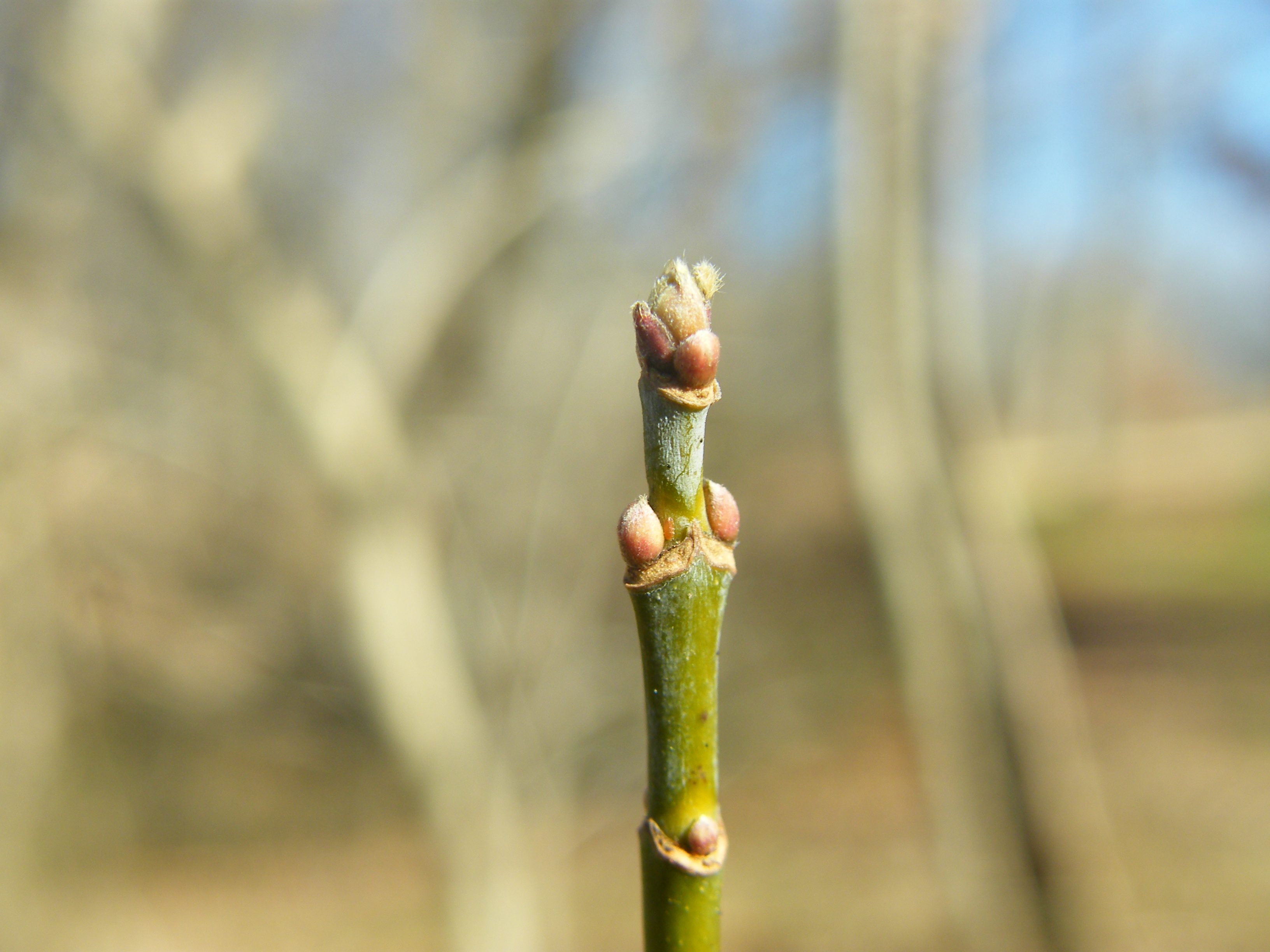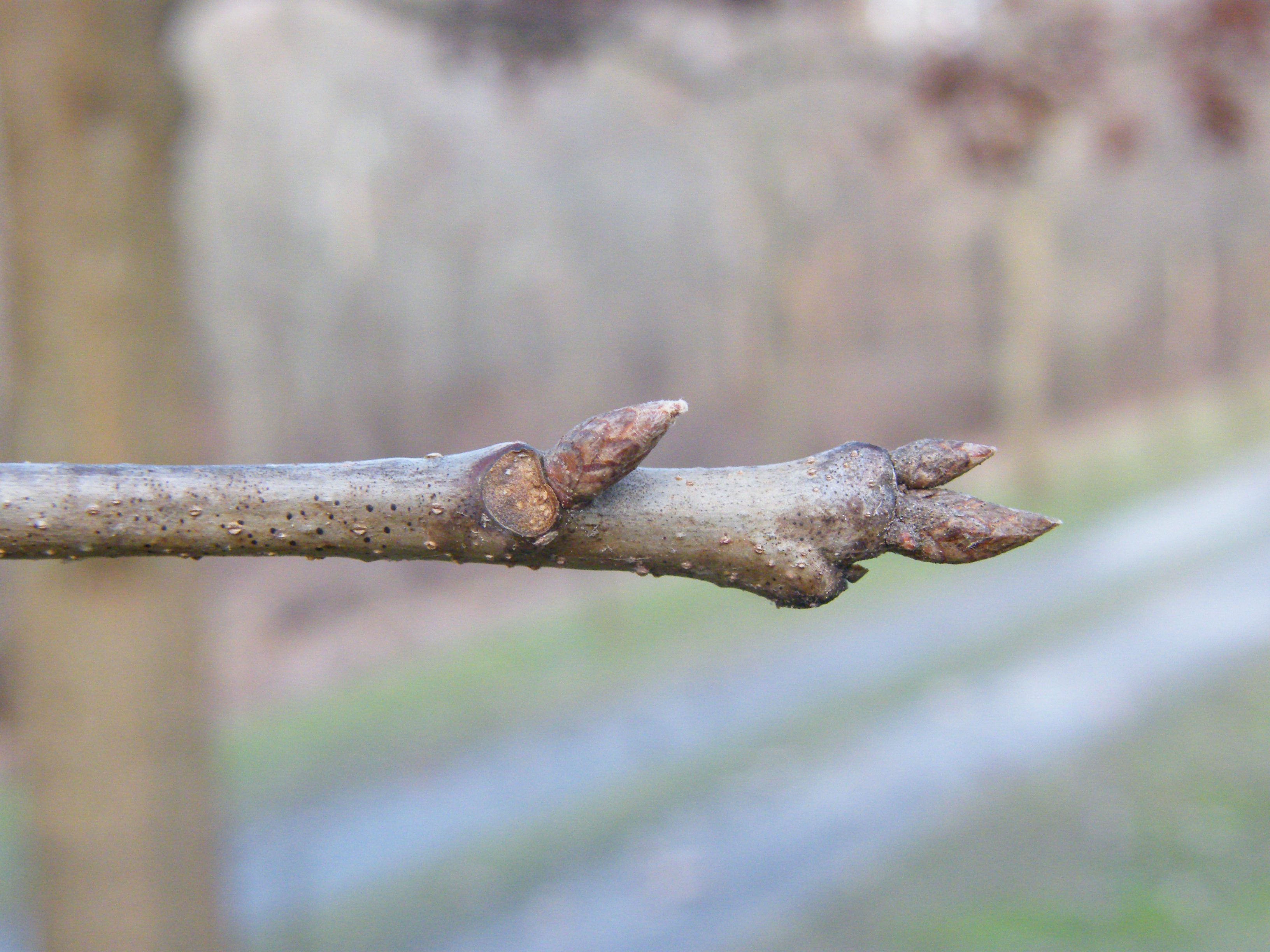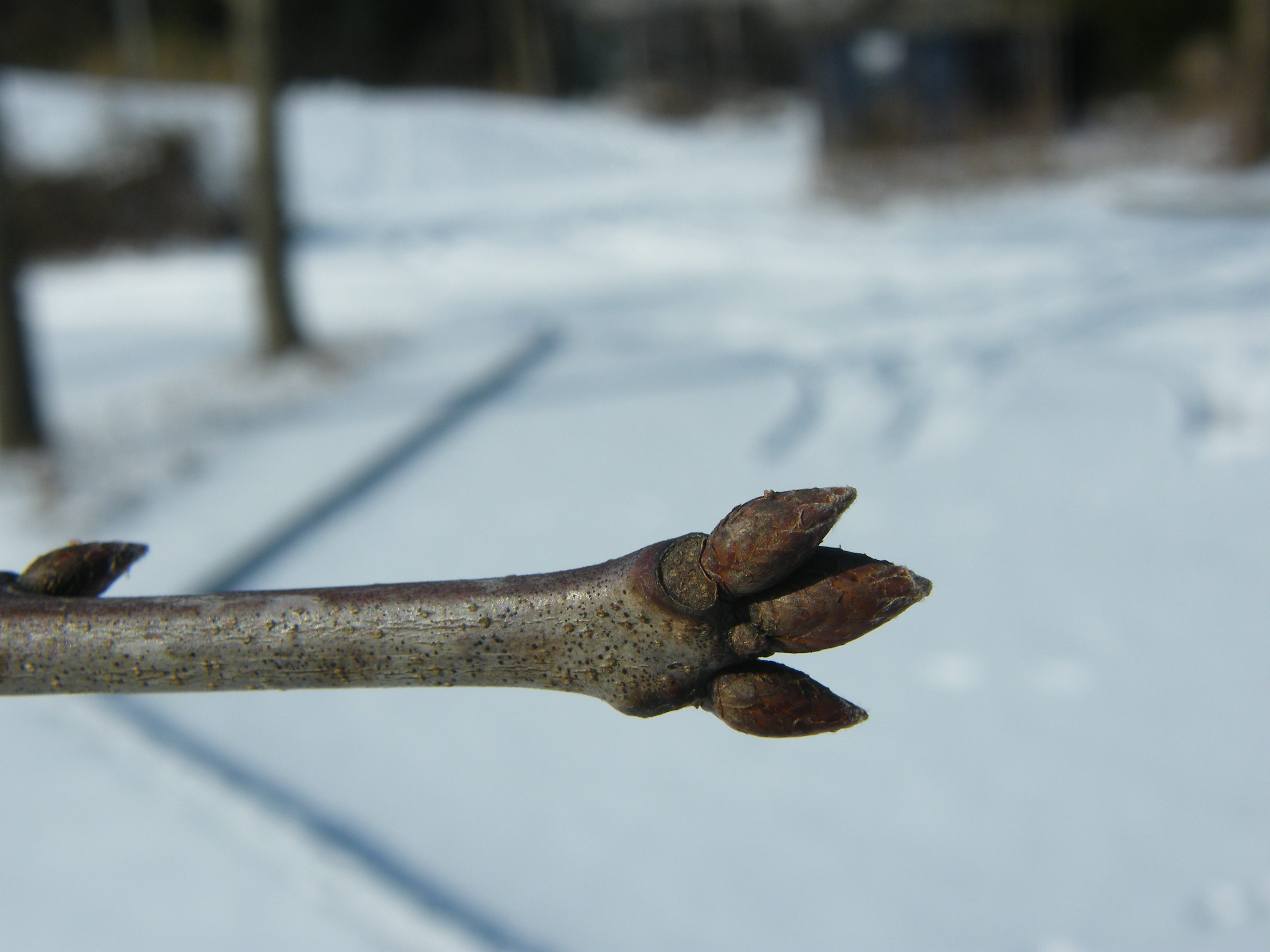“You can observe a lot by watching” – Yogi Berra
This has been a cold and snowy start to 2022 that has kept most of us close to home. Apart from the sudden uptick in birds visiting your feeders, the winter can feel like downtime for any nature watcher. However, nature is still all around you, it’s just a little harder to find. To paraphrase the legendary baseball catcher Yogi Berra (famous for his ‘Yogi-isms’), sometimes you just have to go out and look for it. Trying to identify trees in winter is a great example of learning by looking. Many trees look quite similar without their leaves, so your average person may not find them particularly interesting in winter. However, if you look closely, you will see one of their most variable and intriguing parts – their buds! Buds are basically tough scales which protect the soft leaves or flowers within from being damaged during the cold winter.
Buds vary a lot between trees in their size and texture, with most being smooth or stippled while some are hairy or fuzzy. You might also be surprised at how much color variation there is in buds. Some are dull gray or bronze while others are vivid green or even blazing red. In fact, buds vary so much in shape, color and arrangement that they can help you identify trees in the depths of winter. Some of our most common trees have simple, single terminal buds which makes them relatively easy to identify (below).
Buds are a perfect opportunity for people of all ages and locations to enjoy nature in winter. They are easy to find – just look at the end of the branches of the nearest tree or shrub! Also, trees are all around you. Although you may not have them in your yard, there are sure to be trees in your neighborhood, schoolyard or local park. And because they don’t move, buds make excellent subjects for photography. Some of the most interesting buds to photograph are fairly complex and sometimes arranged in distinctively patterned clusters (below).
You may not recognize some of your neighborhood buds here, perhaps because they are growing on an uncommon or non-native tree. If so, you could photograph them with your phone then try to identify the tree using an app such as iNaturalist or a field guide. However, if you find some mystery buds, try building your own gallery of photographs then identifying the trees later in the year once you get more clues from their leaves, flowers or fruits. It’s fun! The buds below look quite complicated though you may be surprised to learn they are all found on common local trees.
As Yogi Berra said, you can observe a lot by watching, and looking at the same buds every few weeks is a fascinating way to watch nature’s cycle play out. This is also an easy way to teach yourself which tree species leaf out early in the year and which open their leaves late. Maybe spring feels like a distant prospect on a cold wintry day like today but keep checking out those buds and it won’t be long before you start seeing bright green leaves poking out!
